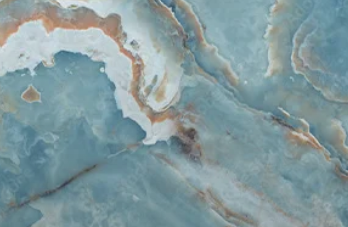Have you ever gazed upon your marble, adorned with its array of exquisite colors—some vivid and striking, while others exude a more refined and graceful allure—and pondered the origins of these beautiful hues? After learning how these colors are formed, you’ll never look at your marble quite the same.
Marble is a metamorphic rock that forms from limestone through the process of metamorphism. (Alteration of rock by heat, pressure, or other natural occurrences). During this transformation, a range of factors influence the coloration of marble, giving rise to the stunning array of colors and patterns that make each marble type unique. The main factors that contribute to the colors of marble are mineral composition, impurities, and geological processes. Let’s explore each of these aspects in detail:
Mineral Composition
Marble is primarily composed of calcite or dolomite minerals, which are both forms of calcium carbonate. (Calcium carbonate is a combination of carbon, oxygen, and calcium and is a common mineral found throughout the world.) The crystal structure of these minerals allows them to interact with light in different ways, influencing the perceived color of the marble. The presence of other minerals and impurities further enhances these color variations.
Impurities
Impurities are foreign substances that find their way into the marble during the metamorphic process. These impurities play a significant role in determining the color and patterns exhibited by the marble. Some common impurities found in marble include:
Iron Oxides
Iron impurities can give marble various shades of red, brown, yellow, and orange. Hematite creates reds and yellows, while limonite produces browns and yellows.
Graphite
The presence of graphite can lend a gray or black color to the marble.
Clay Minerals
Clay minerals introduce earthy tones such as beige, tan, or brown to the marble.
Serpentine
Serpentine impurities create green marble, such as the famous Verde Antique marble.
Sulfides and Organic Materials
These can lead to black or dark veining in the marble.
Geological Processes
The geological history of the region where the marble forms can also influence its color. The presence of specific minerals or the type of rock that undergoes metamorphism alongside the limestone can contribute to the unique colors and patterns. Additionally, the intensity of heat and pressure during metamorphism will impact the recrystallization of minerals and the formation of specific colors.
Local Geography and Environment
Different regions around the world are known for their distinct marble colors and patterns due to variations in the local geology and environment. For example, Carrara marble from Italy is famous for its white color and has been used in many famous sculptures and buildings. The Danby marble from Vermont, USA, is prized for its pure white color and minimal veining.
Age and Degree of Metamorphism
The duration and intensity of the metamorphic process can influence the colors of marble. Marble that undergoes extensive metamorphism over prolonged periods may have a more uniform color, while marble that experiences variable conditions may show a greater variety of colors and patterns.
The mesmerizing colors of marble result from a complex interplay of mineral composition, impurities, geological processes, and the specific environmental conditions where the metamorphism takes place. This diversity in colors is what makes marble such a sought-after and cherished material for various commercial, residential, and artistic applications.
By Fred Hueston. This article is one of a series of articles written and published on behalf of Surface Care PRO Partners.


